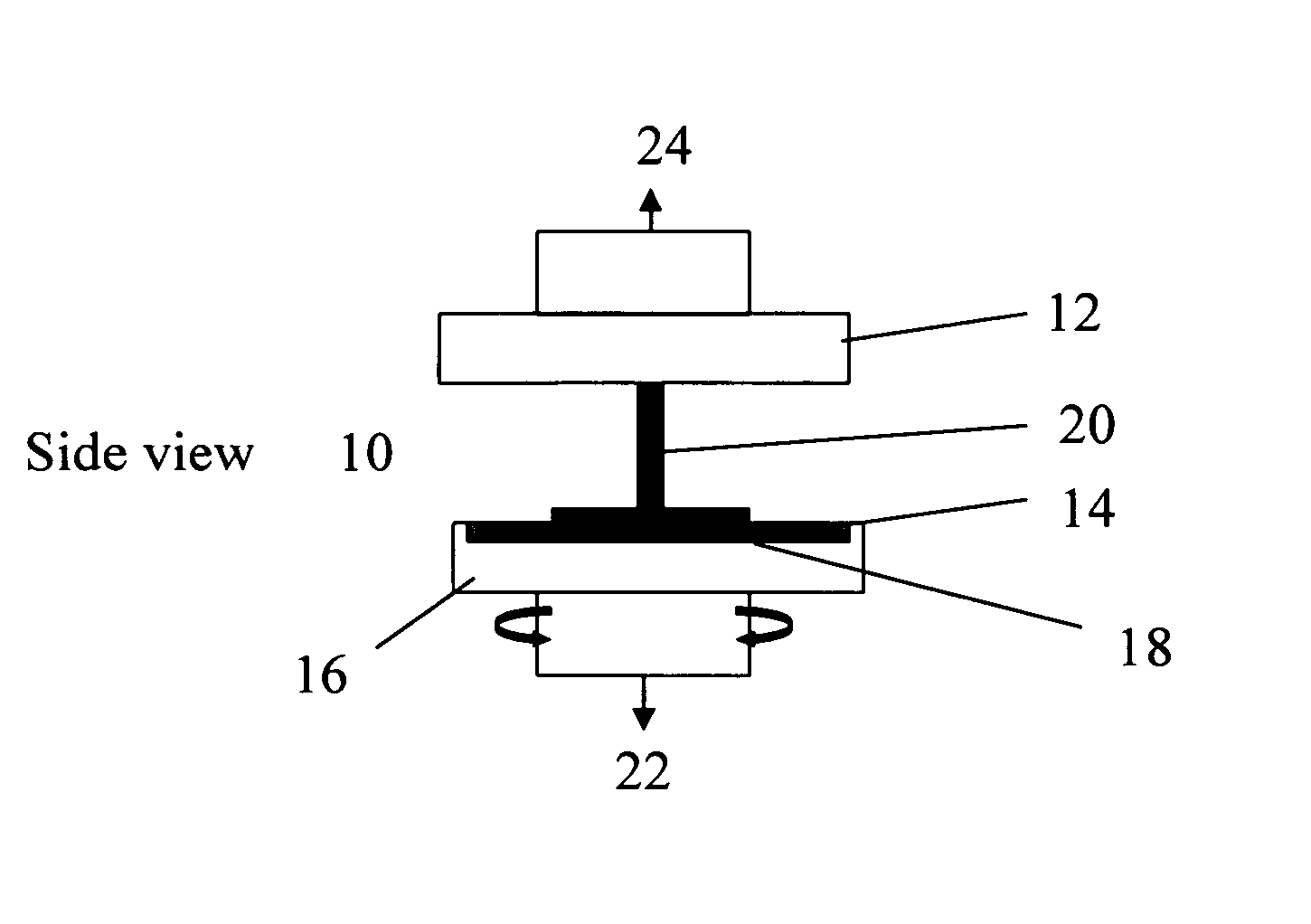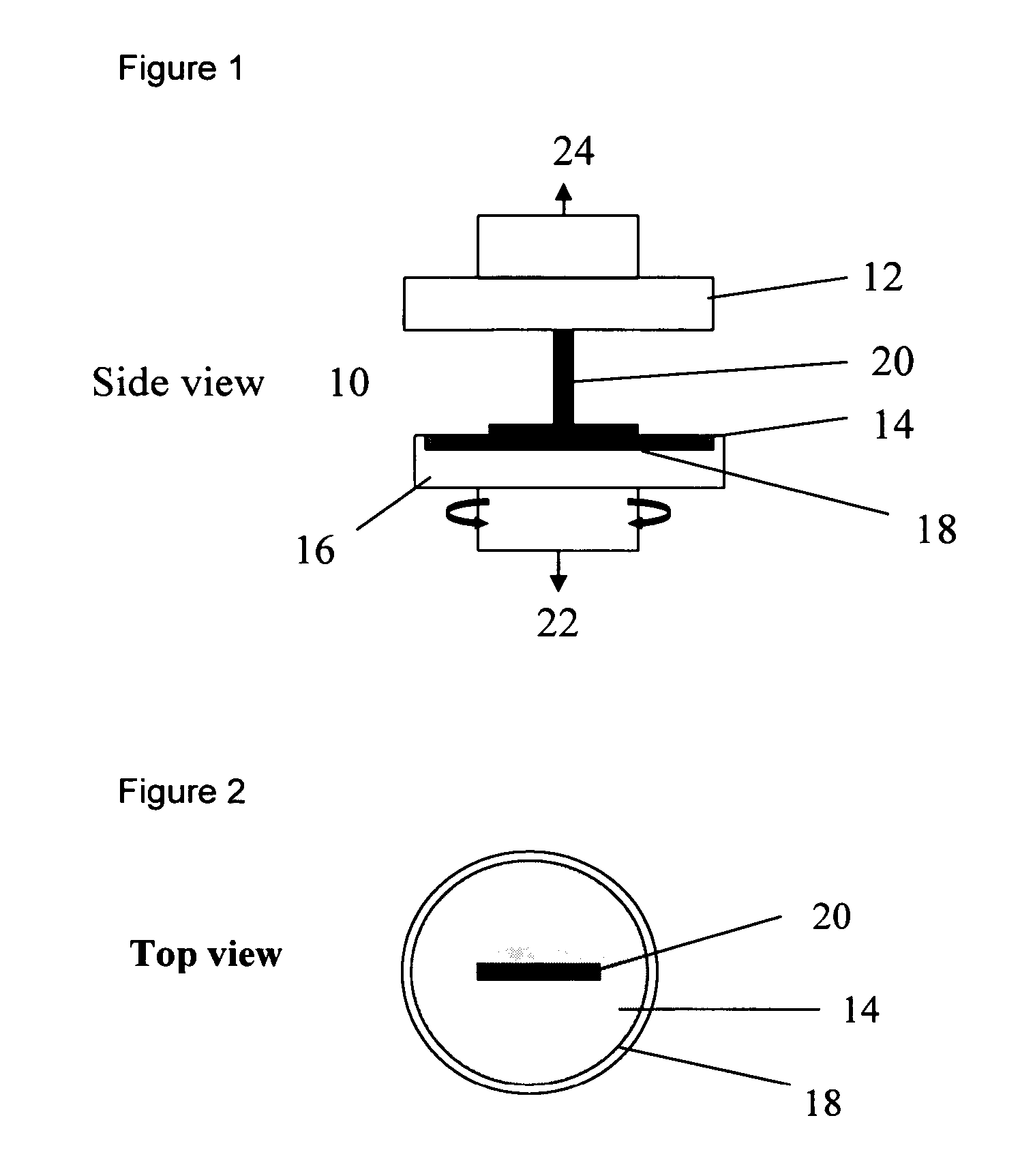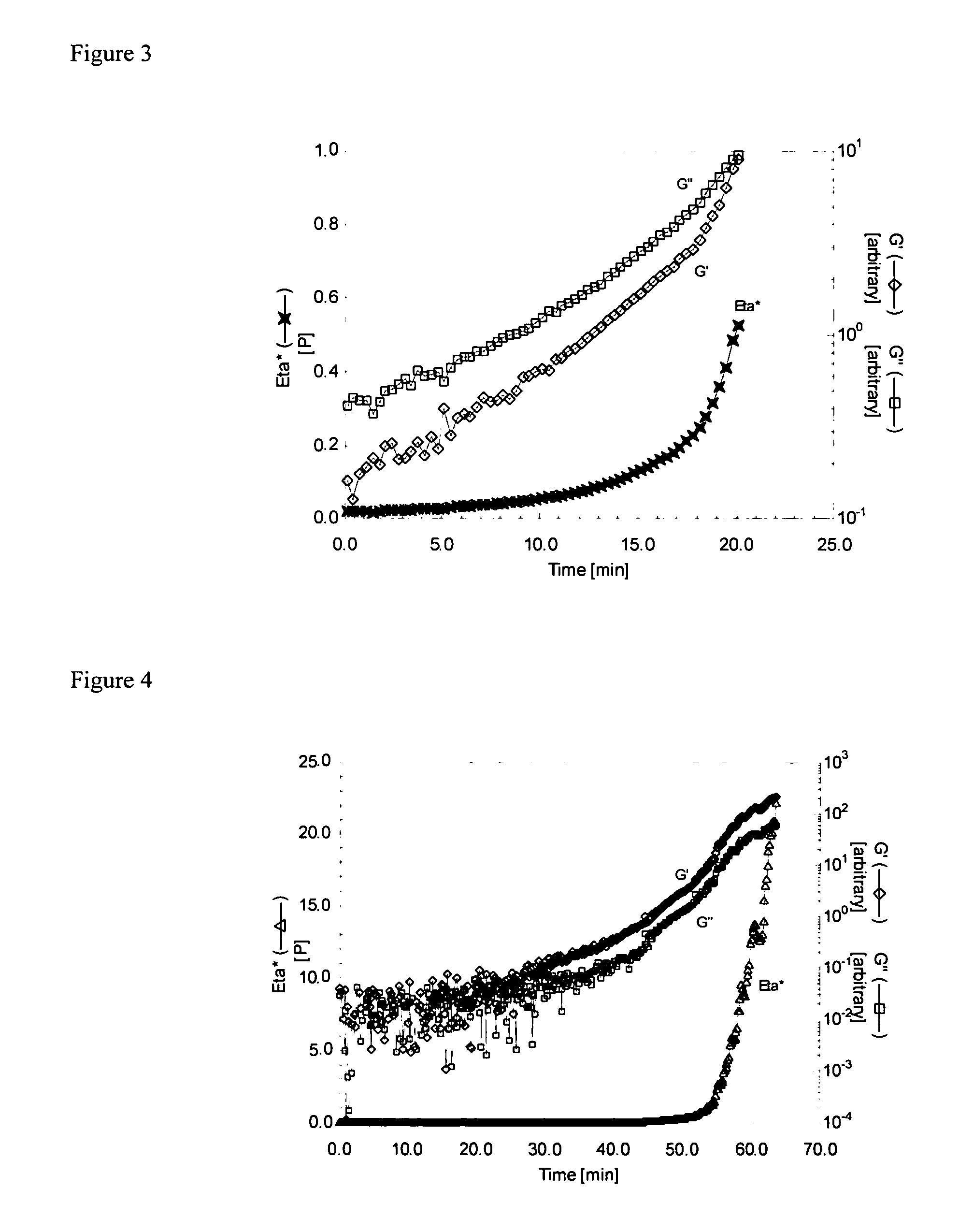Device to measure the solidification properties of a liquid film and method therefor
a solidification property and liquid film technology, applied in measurement devices, scientific instruments, instruments, etc., can solve the problems of difficult to accurately reproduce, inconsistent reproducibility, subjective test results, etc., and achieve the effect of accurate monitoring
- Summary
- Abstract
- Description
- Claims
- Application Information
AI Technical Summary
Benefits of technology
Problems solved by technology
Method used
Image
Examples
example 1
[0052] A 0.1 mm deep and 23 mm diameter circular trough was filled with approximately 0.1 ml of a coating formulation (a metallic basecoat containing carboxymethyl cellulose acetate butyrate, a cellulose ester available from Eastman Chemical Company in Kingsport, Tenn., under the tradename CMCAB) using a syringe. The trough was immediately scrapped to form a uniform surface by using the edge of a glass slide, and the T-bar probe (0.28 mm×15 mm, diameter×length) lowered to 0.05 mm gap and then the dynamic mechanical analyzer (ARES® available from TA Instruments in New Castle, Del.) was run at 100% strain and 25 rad / sec frequency. Changes in viscoelastic properties; Eta* (complex viscosity), G′ (elastic modulus) and G″ (viscous modulus) with time are illustrated in FIG. 3. The torque on the probe is small, especially during the early stage of the drying. To detect such a low torque, a high sensitivity transducer (e.g. 100 FRT on ARES from TA Instruments) should be used. The test shoul...
example 2
[0053] A 0.2 mm deep and 23 mm diameter circular trough was injected with 0.1 ml of an acrylic latex dispersion using a syringe. The solution was spread evenly within the trough by using the edge of a glass slide or a stainless steel spatula. The T-bar probe (0.28 mm×15 mm, diameter×length) was lowered to 0.05 mm gap and the oven door which closes the trough and the T-bar was closed. The dynamic mechanical analyzer (ARES® from TA Instrument) was then started without purge gas. The dynamic test was conducted with 100% strain and 25 rad / sec frequency at ambient temperature. The complex viscosity and the moduli (elastic and viscous) are plotted in FIG. 4.
example 3
[0054] The same test described in Example 2 was conducted with a nitrogen purge with 4 standard cubic feet per hour flow rate in the closed oven. The complex viscosity is plotted together with the result from example 2 in FIG. 5.
PUM
| Property | Measurement | Unit |
|---|---|---|
| depth | aaaaa | aaaaa |
| depth | aaaaa | aaaaa |
| depth | aaaaa | aaaaa |
Abstract
Description
Claims
Application Information
 Login to View More
Login to View More - R&D
- Intellectual Property
- Life Sciences
- Materials
- Tech Scout
- Unparalleled Data Quality
- Higher Quality Content
- 60% Fewer Hallucinations
Browse by: Latest US Patents, China's latest patents, Technical Efficacy Thesaurus, Application Domain, Technology Topic, Popular Technical Reports.
© 2025 PatSnap. All rights reserved.Legal|Privacy policy|Modern Slavery Act Transparency Statement|Sitemap|About US| Contact US: help@patsnap.com



